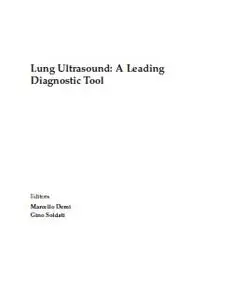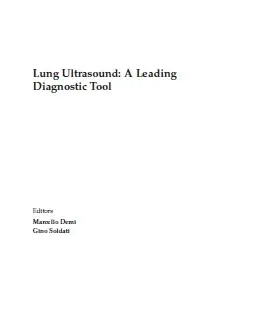Lung Ultrasound: A Leading Diagnostic Tool by Marcello Demi, Gino Soldati
English | PDF | 2023 | 328 Pages | ISBN : N/A | 46.8 MB
I remember the first time I met Dr. Soldati. He came into my lab and started talking about resonance and bridges collapsing when soldiers passed by. You can imagine my disorientation; I told Soldati that I had already taken several projects on board and could not commit to a new one. This was not true; I had just finished the analysis of a convincing mathematical model of retinal vision and was looking for new ideas to develop. However, the premises were not good and I declined the offer of collaboration. Obviously, Soldati did not give up and, over the following days, returned several times until he succeeded. I do not remember what clicked in my head, but, surely, curiosity got the better of me and his farfetched idea began to translate into more understandable engineering language.
An engineer, however, is a bit like a doubtful St. Thomas, where seeing is believing. Therefore, the first thing to do was to reproduce those strange acoustic signs that Soldati observed in LUS (lung ultrasound) images. Imagine my surprise when, after a few attempts, I managed to reproduce those signs with simple objects (a steel rod and two aluminum blocks) immersed in water. Since that time, we have never stopped investigating this phenomenon and the latter has slowly revealed its physical nature. Acoustic traps exist in pathological conditions that trap part of the energy of US pulses and gradually return it over time. Ultrasound scanners interpret what comes next as echoes of more distant structures, and this simple fact explains the nature of vertical signs: they are the visible representation of acoustic energy emitted from isolated, non aerated spaces located beneath the pleura. Since then, it has opened up new avenues of investigation because the shape of vertical signs (more appropriately, the response of acoustic traps) varies as the shape, size, and distribution of subpleural, non-aerated spaces vary. In short, a vertical sign is a bit like the signature of an acoustic trap that generates it, similar to footprints left by animals in the woods—we just have to learn to recognize these signs. When we began our collaboration, lung ultrasound was a tool with limited application by pulmonary physicians. Even the physicians at our institute (a medical research institute that is certainly on the cutting edge) practically ignored LUS. Today, the application of LUS is widespread, and medical and nonmedical doctors are collaborating to provide scientific answers to many questions that still arise when observing the aforementioned phenomenon. For this reason, we readily accepted the proposal of Diagnostics to be the Guest Editors of a Special Issue on lung ultrasound. We must never get tired of reiterating the importance of collaboration between medical and nonmedical doctors in the development of new diagnostic devices.
Thanks For Buying/Renewing Premium From My Blog Links To Support
Without You And Your Support We Can't Continue
Without You And Your Support We Can't Continue



